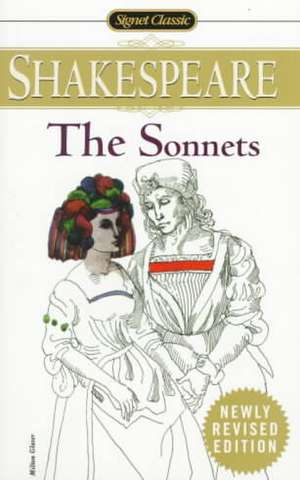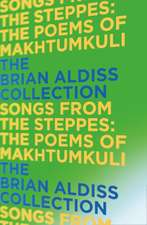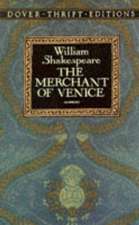The Sonnets: Second Revised Edition
Autor William Shakespeareen Limba Engleză Paperback – 31 dec 2000
The Sonnets represent the highpoint of love poetry in English: they continue to astonish and delight with the abundance of their word play and the intensity of the erotic feelings they depict. This book prints all of Shakespeare's 154 sonnets and provides a commentary on this narrative of rivalry in love.
The Sonnets are central to William Shakespeare's art. They display Shakespeare's poetic talent at its height. The Sonnets are the great love poem sequence in British poetry, as well as being the longest single group of English Renaissance sonnets. They rival in grandeur, skill and cleverness the poetic sequence from which they ultimately derive (via Sir Thomas Wyatt): Francesco Petrarch's Rime Sparse. In Shakespeare's Sonnets, introspection and self-analysis is as rigorous as in Petrarch's Canzoniere, but Shakespeare's bitterness and sense of irony is more deeply ingrained than in Petrarch's poems.
Shakespeare's Sonnets came late in the development of the Petrarchan sonnet sequence. They are decadent, late efforts of an already (by the 1590s) old-fashioned poetic form. Yet Shakespeare manages to infuse the sonnet sequence with an extraordinary power and magic. The Sonnets, indeed, contain some of the most marvellous moments in any (English) poetry. The magnificence of the opening lines of the Sonnets, for instance, is undeniable:
Shall I compare thee to a summer's day? (18.1)
Full many a glorious morning have I seen
Flatter the mountain tops with sovereign eye,
Kissing with golden face the meadows green,
Gilding pale streams with heavenly alchemy (33.1-4)
Take all my loves, my love, yea, take them all (40.1)
Sweet love, renew thy force (56.1)
Let me not to the marriage of true minds
Admit impediments: love is not love
Which alters when it alteration finds,
Or bends with the remover to remove. (116.1-4)
My love is as a fever, longing still (147.1)
Each poem is printed on its own on the page, without footnotes and annotations.
Includes new illustrations of Shakespeare and his art, an introduction, notes on certain sonnets, and a bibliography of references.
www.crmoon.com"
| Toate formatele și edițiile | Preț | Express |
|---|---|---|
| Paperback (23) | 19.60 lei 3-5 săpt. | +4.85 lei 4-10 zile |
| Harper Collins Publishers – 27 ian 2016 | 19.60 lei 3-5 săpt. | +4.85 lei 4-10 zile |
| Penguin Random House Group – 31 dec 2000 | 34.23 lei 3-5 săpt. | |
| Reclam Philipp Jun. – iun 2006 | 36.35 lei 17-23 zile | +3.38 lei 4-10 zile |
| Vintage Publishing – 3 aug 2016 | 37.05 lei 24-35 zile | +13.10 lei 4-10 zile |
| CREATESPACE – | 39.72 lei 3-5 săpt. | |
| Vintage Books USA – 25 mar 2009 | 41.38 lei 24-35 zile | +13.36 lei 4-10 zile |
| CREATESPACE – | 41.52 lei 3-5 săpt. | |
| Alma Books COMMIS – 21 sep 2016 | 44.70 lei 3-5 săpt. | +7.30 lei 4-10 zile |
| Penguin Random House Group – 16 noi 2017 | 47.19 lei 24-35 zile | +16.67 lei 4-10 zile |
| CREATESPACE – | 48.11 lei 3-5 săpt. | |
| SPARKNOTES – 31 oct 2004 | 49.57 lei 3-5 săpt. | +16.60 lei 4-10 zile |
| – | 56.32 lei 3-5 săpt. | |
| Random House – 19 ian 2023 | 56.51 lei 24-35 zile | +17.69 lei 4-10 zile |
| – | 58.85 lei 3-5 săpt. | |
| – | 67.22 lei 3-5 săpt. | |
| CreateSpace Independent Publishing Platform – | 114.48 lei 3-5 săpt. | |
| Cambridge University Press – 27 feb 1997 | 168.57 lei 3-5 săpt. | +39.32 lei 4-10 zile |
| Outlook Verlag – 11 oct 2022 | 259.62 lei 3-5 săpt. | |
| 1ST WORLD LIB INC – 31 oct 2005 | 70.79 lei 6-8 săpt. | |
| Cambridge University Press – 21 iun 2006 | 81.27 lei 6-8 săpt. | |
| Crescent Moon Publishing – 20 mar 2016 | 83.46 lei 6-8 săpt. | |
| Blurb – 6 dec 2019 | 90.09 lei 6-8 săpt. | |
| Cambridge University Press – 19 iul 2009 | 335.38 lei 6-8 săpt. | |
| Hardback (5) | 41.66 lei 3-5 săpt. | +26.01 lei 4-10 zile |
| Pan Macmillan – 22 aug 2016 | 41.66 lei 3-5 săpt. | +26.01 lei 4-10 zile |
| chiltern publishing – 31 aug 2021 | 125.72 lei 3-5 săpt. | +13.10 lei 4-10 zile |
| Outlook Verlag – 12 oct 2022 | 397.67 lei 3-5 săpt. | |
| 1ST WORLD LIB INC – 31 oct 2005 | 164.72 lei 6-8 săpt. | |
| Cambridge University Press – 21 iun 2006 | 478.71 lei 6-8 săpt. |
Preț: 34.23 lei
Nou
6.55€ • 6.77$ • 5.45£
Carte disponibilă
Livrare economică 04-18 martie
Specificații
ISBN-10: 0451527275
Pagini: 272
Dimensiuni: 105 x 172 x 15 mm
Greutate: 0.13 kg
Ediția:Revised
Editura: Penguin Random House Group
Colecția Signet Classics
Locul publicării:New York, United States
Descriere
Excerpt from The Sonnets of Shakespeare: From the Quarto of 1609 With Variorum Readings and Commentary
The Sonnets of Shakespeare have a place beside the play of Hamlet in contention for the doubtful honor of being the cause of more perplexity and controversy than any other literary work in the English tongue. More persons, otherwise seemingly normal members of society, have thought that they were the first to understand one or the other of these works, or have professed to make illuminating discoveries regarding them, than could be computed as critics of any writing since the Iliad. If the present editor can come to the end of his task with any feeling of complacency, it is because he has spent some years with the Sonnets and still finds himself without a revelation. In other words, his complacency must be due only to the existence of some evidence that he is still sane - a poor substitute, no doubt, for the enthusiasm of the seer. It is the purpose of this volume, then, not to present a new theory of the Sonnets, but to bring together a body of critical material illustrative of them, sufficient for all the purposes of the less ambitious reader, and adequate to set the most tireless student on the track of what he wishes to know.
The Bibliography is intended to serve as a convenient outline of the history of the text and its interpretation; but it may be well to say something here of the general course of this history. Though seemingly among the fairly popular lyrical collections of the seventeenth century, the Sonnets largely dropped out of sight toward the end of that century and through the greater part of the eighteenth century. The age, therefore, of the building of the modern text of Shakespeare's plays saw no similar work accomplished for the Sonnets, which were not even included in any edition of the Works of Shakespeare (save in occasional supplementary volumes) until Ewing's Dublin edition of 1771, and not again till Malone's of 1790. It is to Malone that we owe, in effect, the acceptance of the narrative and lyrical poems as a part of the standard Shakespeare text; and it is also to him, in large measure, that we owe the modern text of the Sonnets. Practically all the well-known editors of Shakespeare of the nineteenth century, beginning with Boswell (but with the exception of Singer), paid due attention to the Sonnets, and, together with numerous lesser commentators, from time to time proposed improvements in the text; but it cannot be said that it was given to any later critic to add in a distinguished way to the textual work of Malone, -though it was given to a number of his successors to reject certain of his errors. Dyce's conservative work on the text, in the Aldine edition of the Poems (1832) and in his Works of Shakespeare, should perhaps be mentioned. In 1866 the Cambridge editors (Clark and Wright) issued the ninth volume of their Shakespeare, containing the Sonnets, and gave for the first time something like a history of the text up to that period, which was brought down to 1893 in the revised edition.
About the Publisher
Forgotten Books publishes hundreds of thousands of rare and classic books. Find more at www.forgottenbooks.com
This book is a reproduction of an important historical work. Forgotten Books uses state-of-the-art technology to digitally reconstruct the work, preserving the original format whilst repairing imperfections present in the aged copy. In rare cases, an imperfection in the original, such as a blemish or missing page, may be replicated in our edition. We do, however, repair the vast majority of imperfections successfully; any imperfections that remain are intentionally left to preserve the state of such historical works.



















